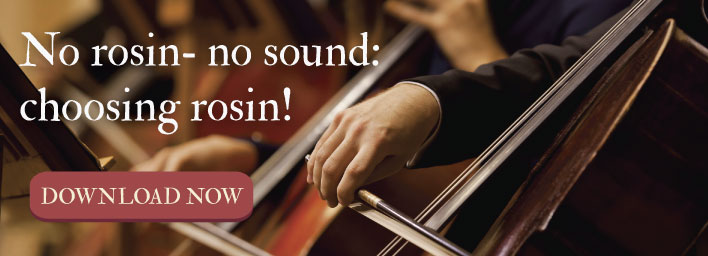
Violins get a bad rap because their sweet, honeyed tones can sound sharp, whiny or grating - depending on the quality of the instrument and the quality of the techniques used to play it.
If your practice sessions send family members and pets into hiding, it's time to evaluate how you're playing the instrument, and whether or not the following performance, techniques and/or structural updates will improve your sound.
Bowing resources
We recommend, 5 Ways to Improve Violin Tone, which covers some of the basics, like:
- Bow pressure. Too much - or too little - pressure adds squeaks and squeals that are eliminated by pressing "just right".
- Bow location. Like all string instruments, violins have "sweet spot." When you bow too close to the bridge or the neck, sound will suffer.
- Adequate rosin. Young musicians get so excited about rosining that excess powder creates a scratchy sound. Resistant musicians may skip rosining altogether, which creates inconsistent tones that fade at the end of bow strokes.
- Bow grip. Playing with bow grips - too tight, too loose, poor form - will quickly illuminate how important proper bow grip is to your overall sound.
- Old strings. Old violin strings don't sound as good as new strings; nylon and synthetic core strings sound different than their metal or steel core counterparts.
We also recommend reading, 4 Tips for Better Bowing, which goes into some of the above points in detail. Improved bowing always equals improved tone. Already tried that?
more tricks for better violin tone
Practice with an attention to tone
There are so many things to remember while you're playing violin - the notes on the page can feel like the least of the challenges, don't they? However, sometimes it's wise to give yourself a break from the mechanics and spend a good 10 or 15 minutes just listening to yourself play.
Pick a piece that is very familiar to you, one you hardly have to think about anymore (like your last concert's performance piece). Now play it and concentrate only on how it sounds. You can also use your phone's recording app - or have a parent record you - and listen back. Playing with an attuned ear can help you identify where your tone tends to suffer, and then you can think about what's happening with the bow, your grip, your technique, etc., and adjust it until you play smoother and with more pleasing sounds.
Check the bridge position
Sometimes, your bridge slips out of position without you realizing it. Violin bridges should sit perpendicular to the body - or they might have a very slight angle backwards. If your bridge is curved in a C-shape or is leaning forward it greatly affects how the bow sounds on the strings.
This video on How to Straighten a Bridge is helpful. Watch it to see if the techniques shown will help you, and then share the information with a parent or your music teacher handy to assist you if necessary.
Check the humidity levels in your home (and your case)
Your violin body, the pegs, the bridge, the hairs on the bow - all are susceptible to changes in temperature and humidity. When they get damp, your violin will tell you about it via compromised tone.
Do bow hairs seem long? Are the pegs sticking or really hard to move? Are the strings sitting higher up than normal? These are signs that the instrument has absorbed too much moisture. Are strings snapping more frequently? Are they sitting closer to the fingerboard? These are signs the instrument is a little too dry.
In the humid, summer months - the instrument may need to be in a room with a dehumidifier if conditioned air isn't doing the trick. In the winter, you may need to use a product, like DAMPIT, in order to keep it humidified properly.
Tune properly, and re-tune as needed
As we noted above, string instruments are susceptible to fluctuations in both temperature and humidity. This means they can slip out of tune (especially if the tuning pegs are particularly loose) while you're in the midst of playing. Even micro-shifts in the pegs' positions cause the instrument to be out of tune. Make sure you tune your violin properly - and regularly - to sound your best.
Consider buying a new instrument
If you're a beginner, you need to be patient - it takes months and years of practice to develop a consistently rich and beautiful tone. However, if you're an intermediate student and have done all of the above – you practice regularly and you feel like your violin's tone doesn't reflect that – it might mean you're ready to buy a new, better violin. Your music teacher can help you determine if this is the case.
Practice, patience, trial and error – all are key to improving your violin tone over time.


